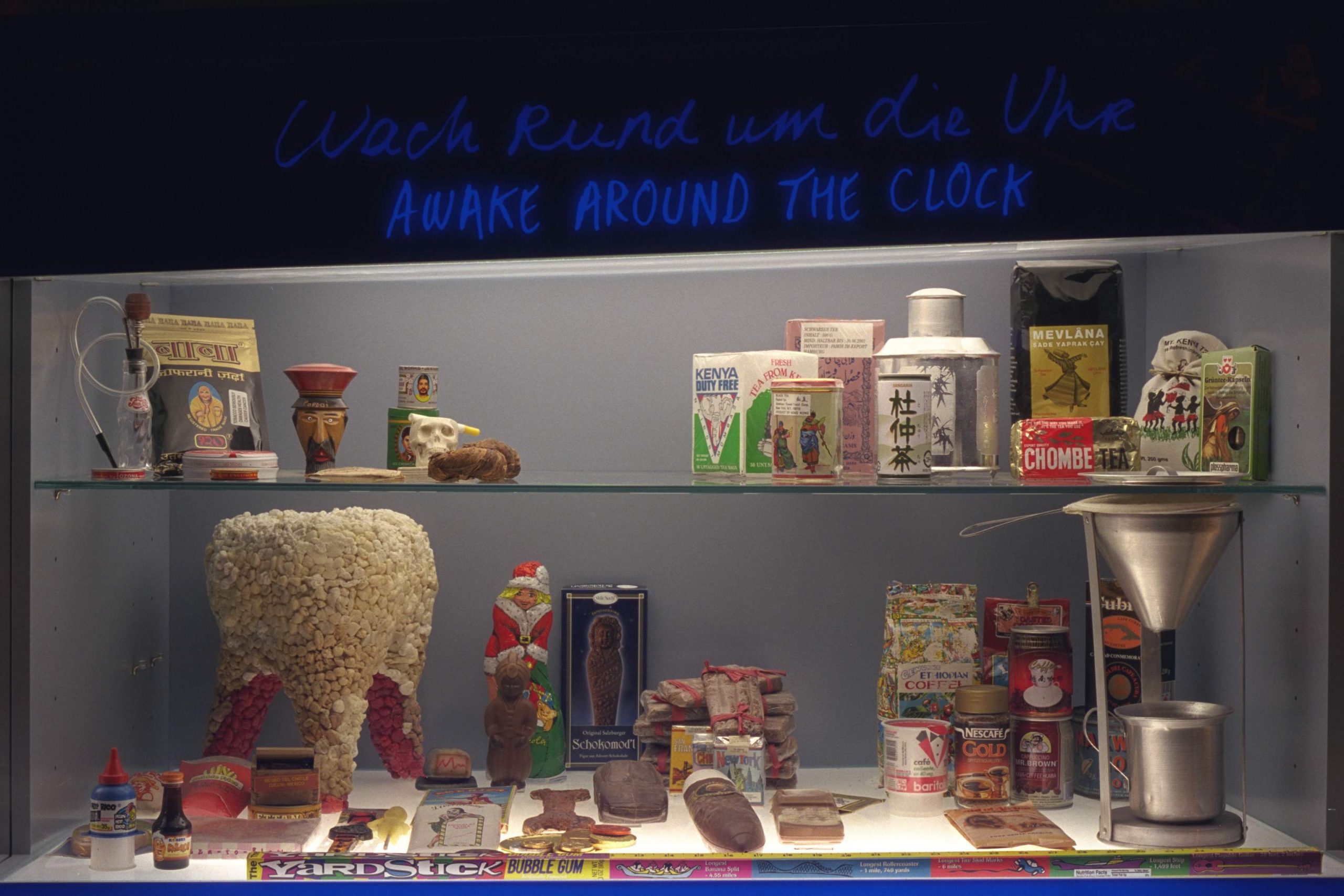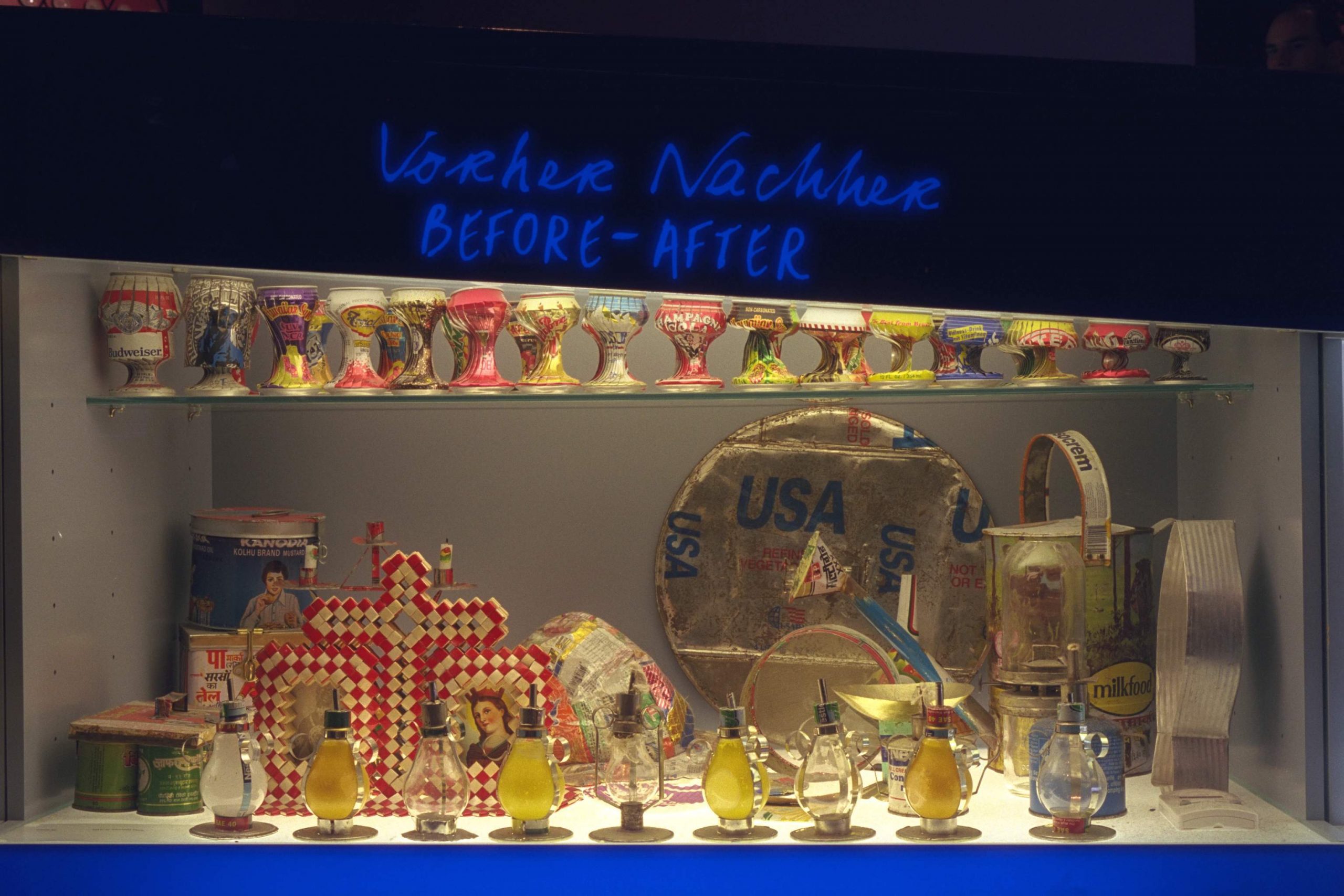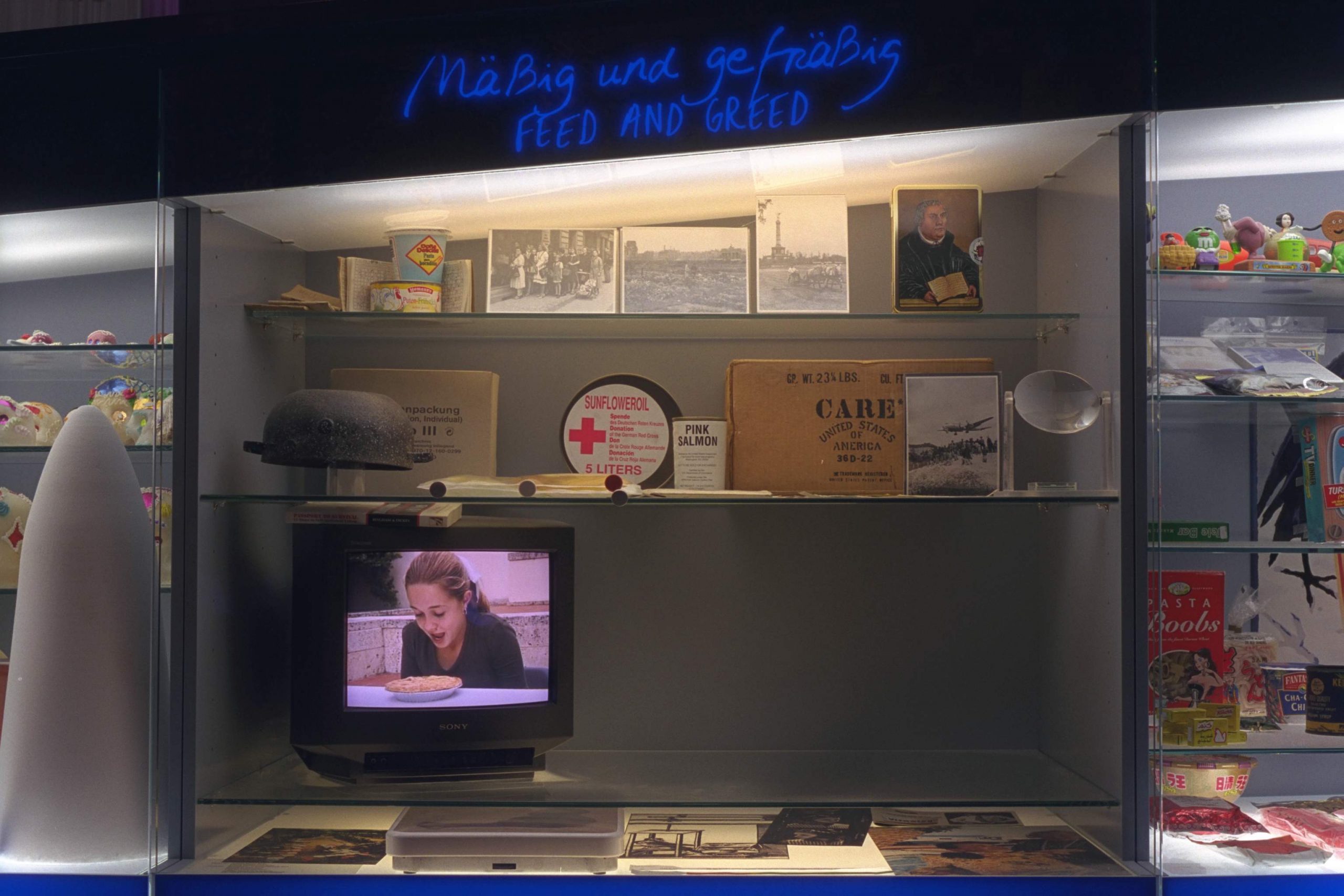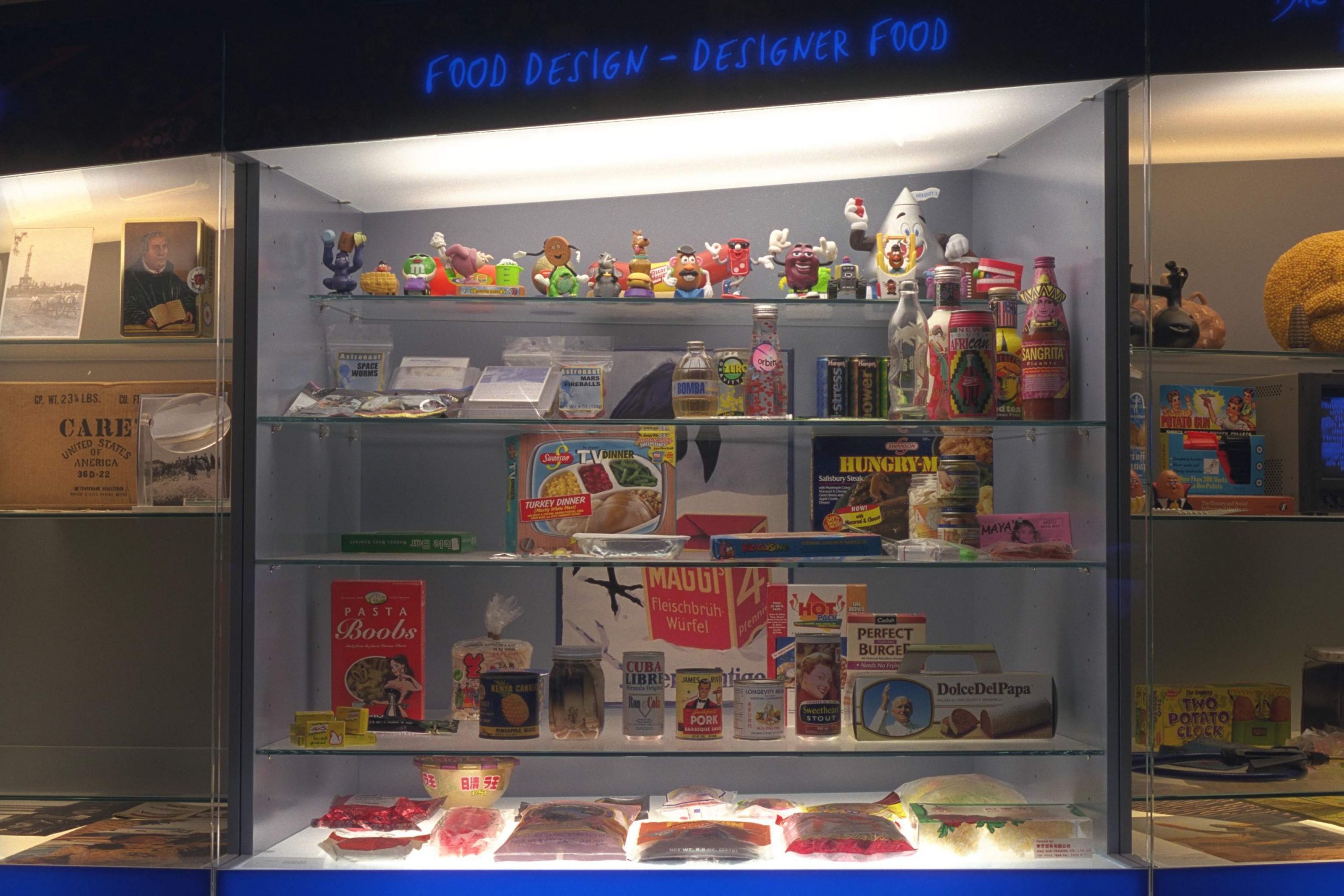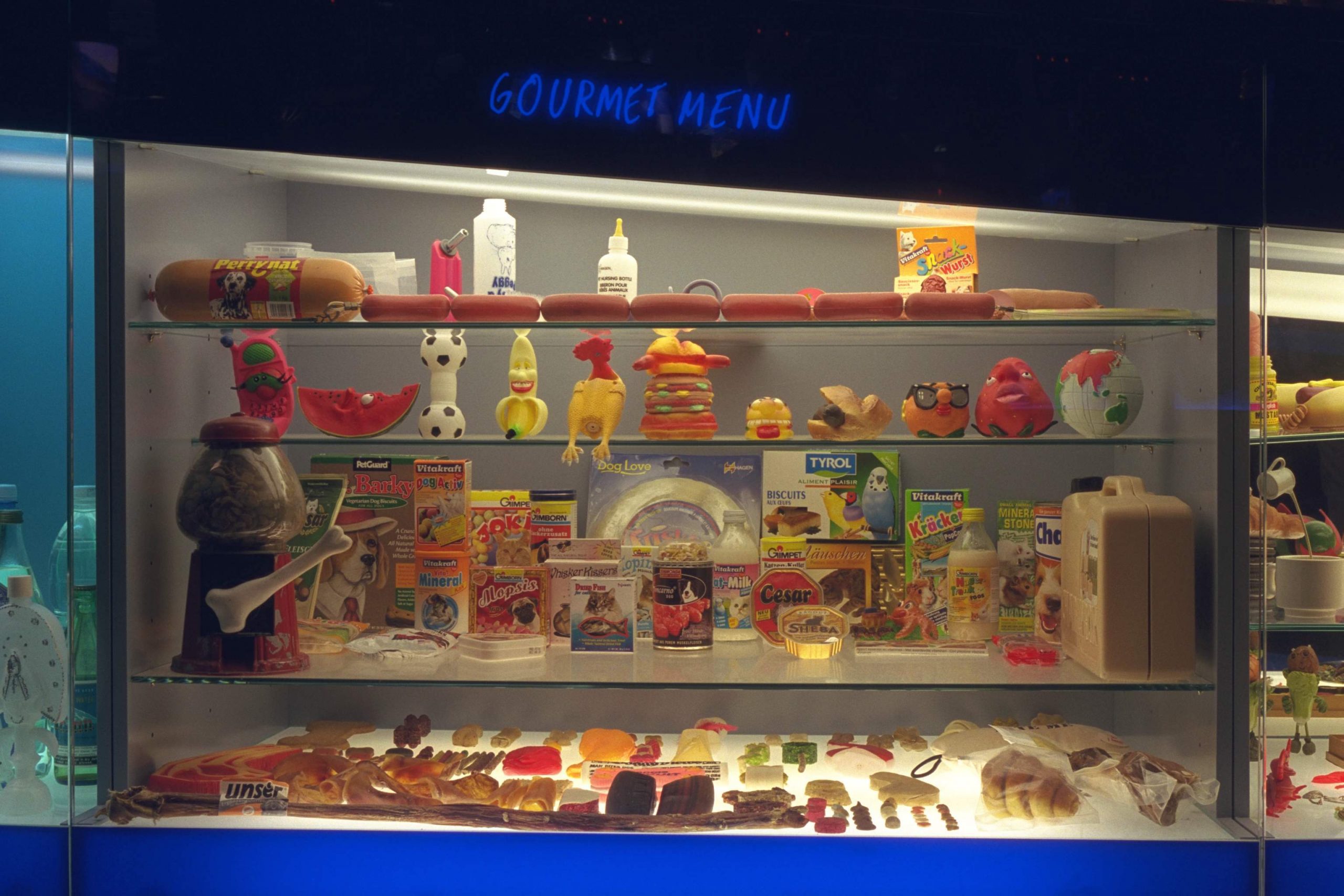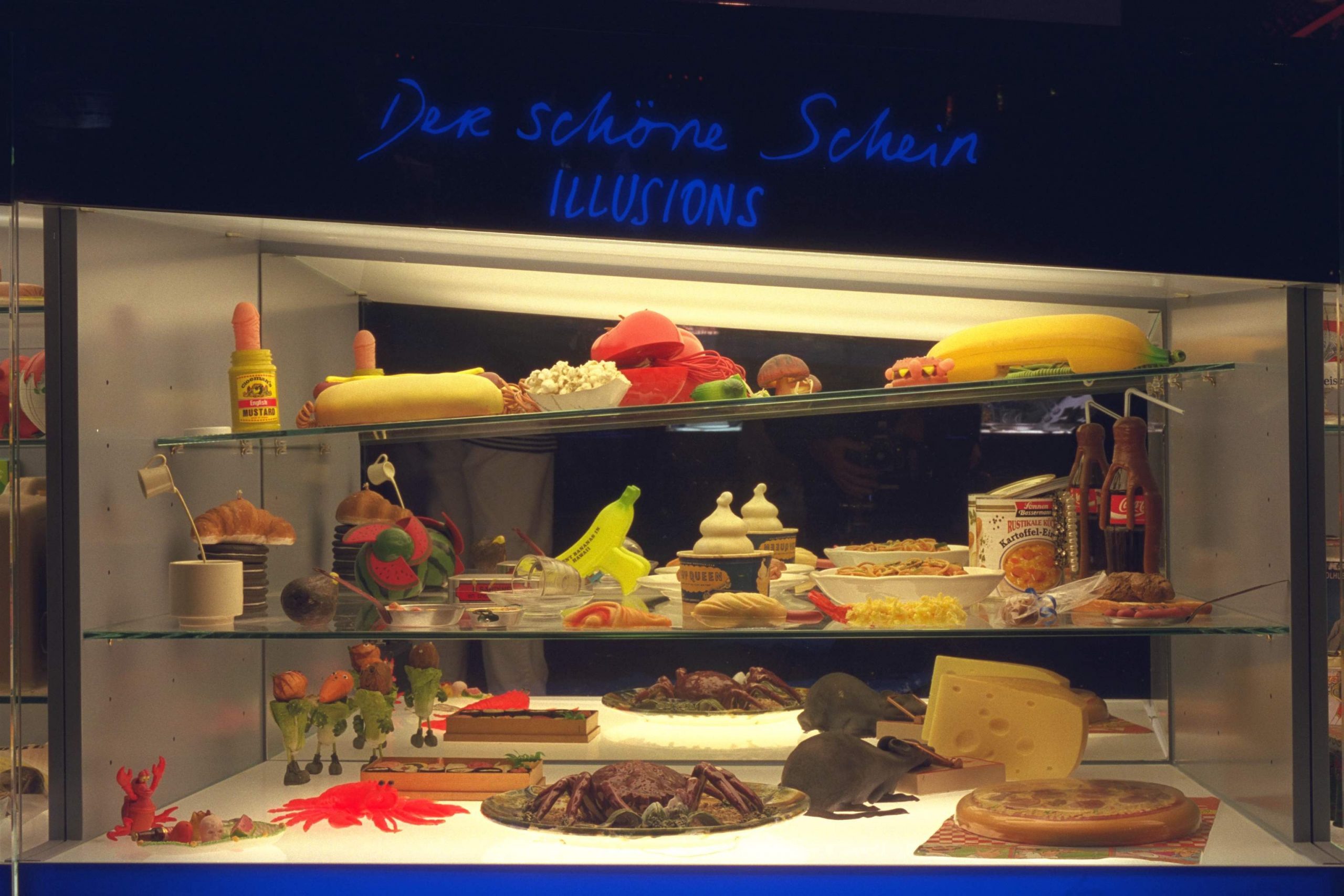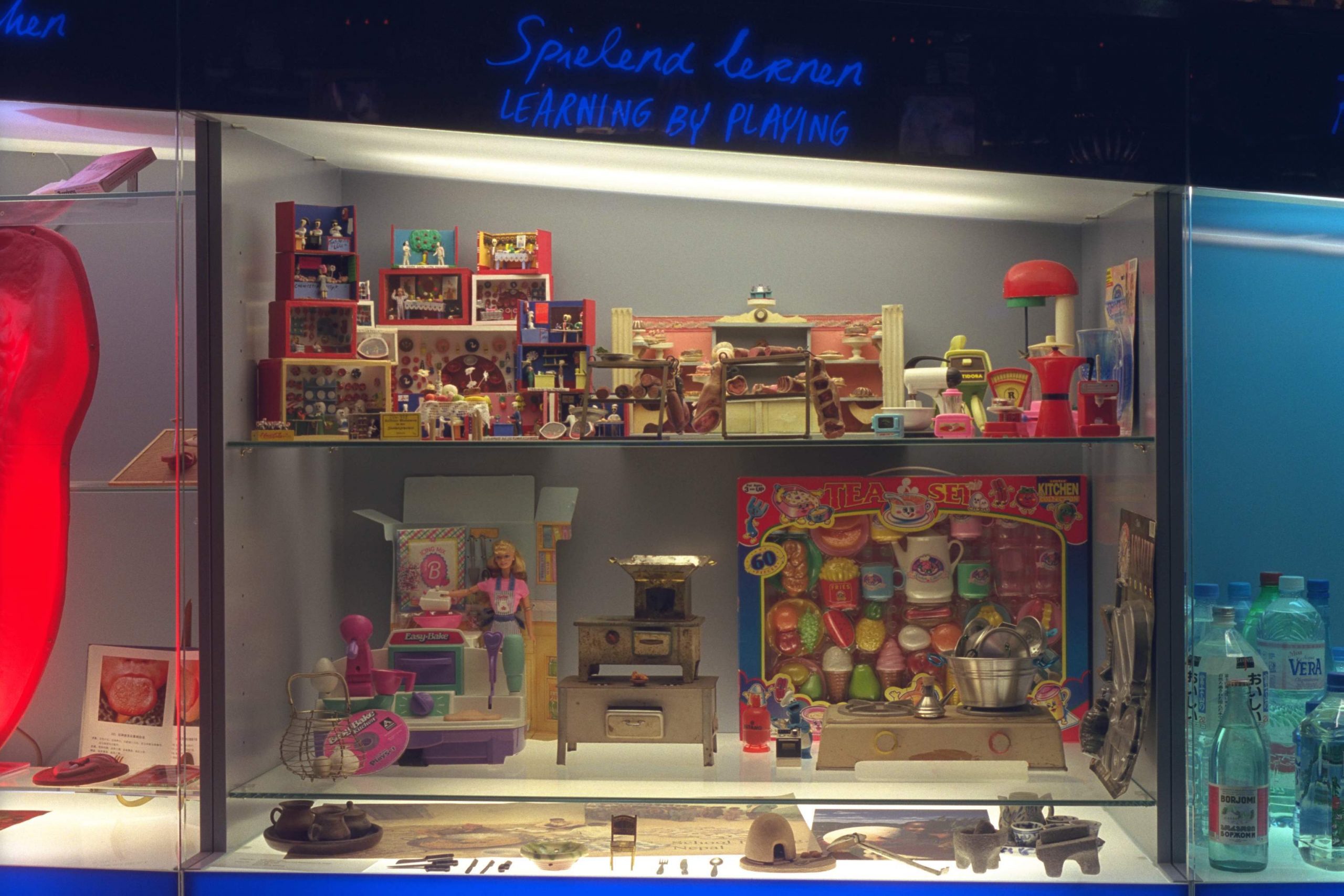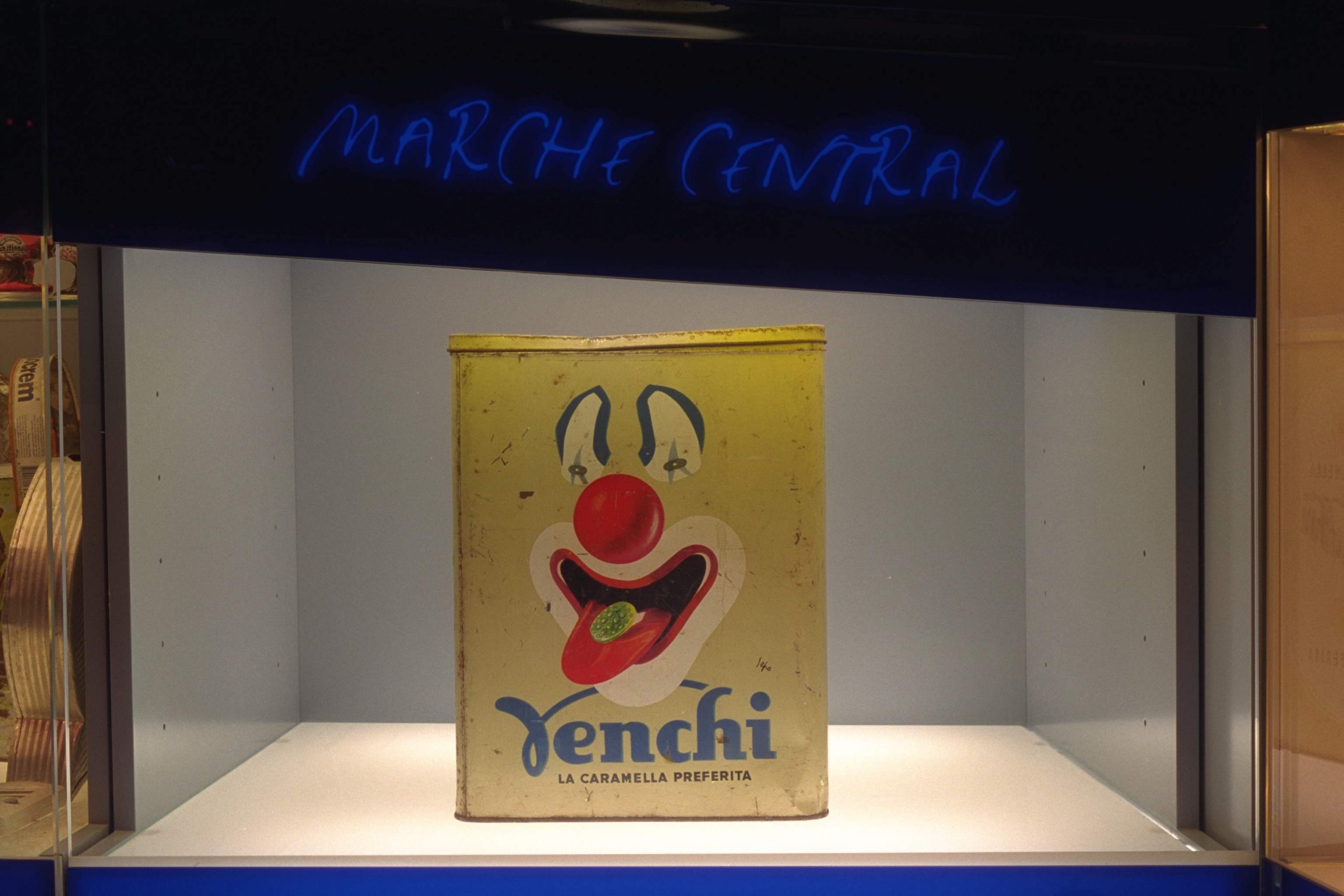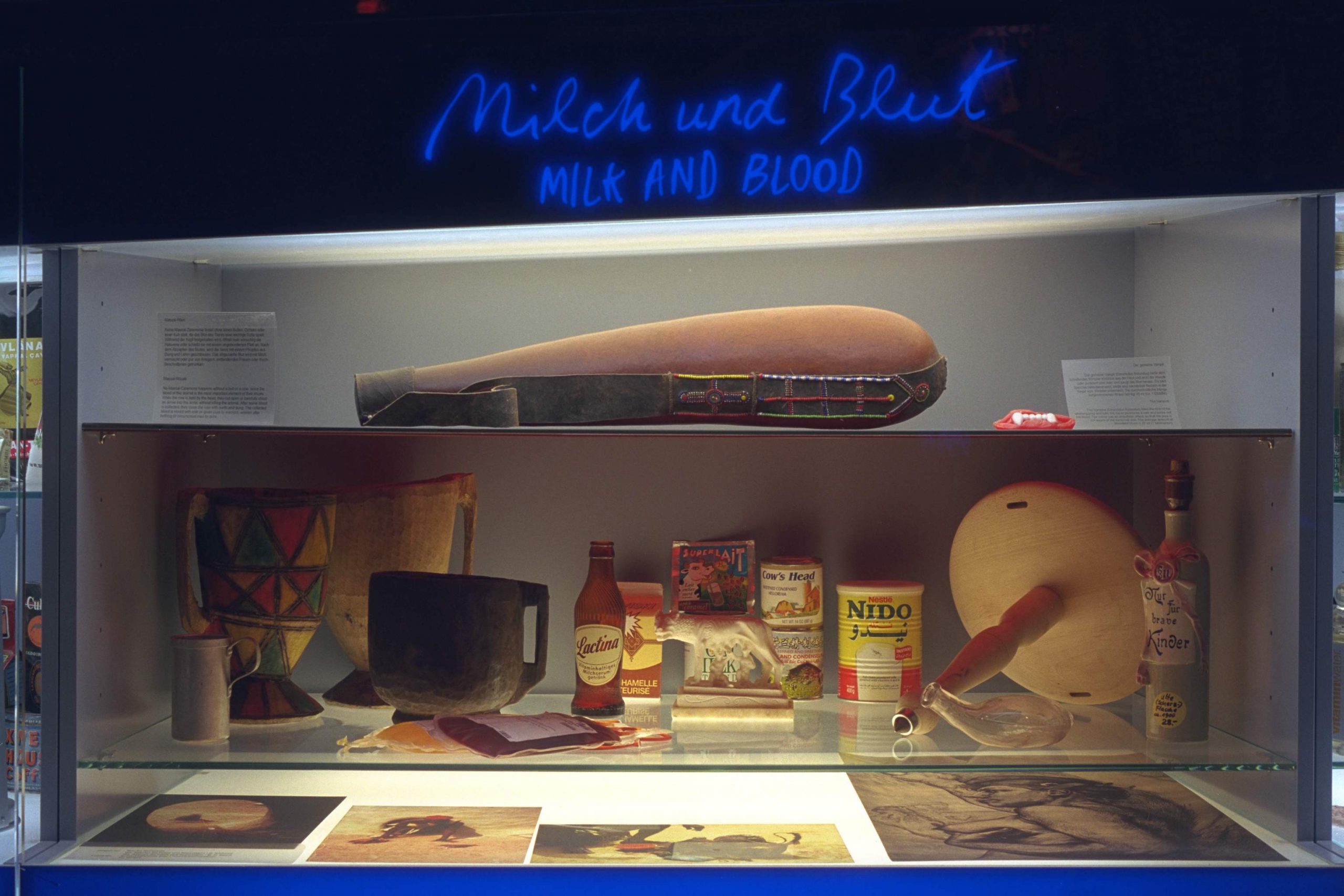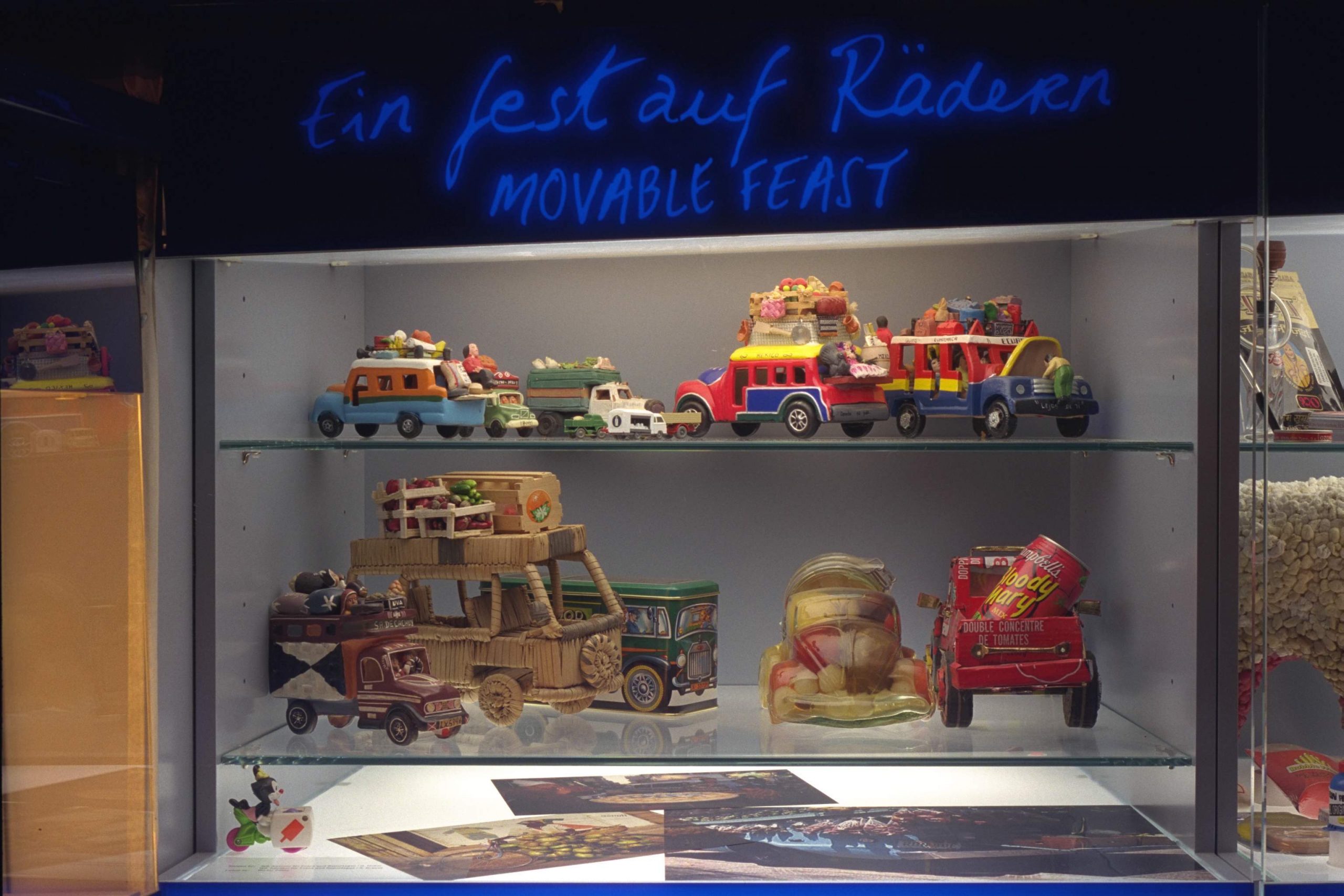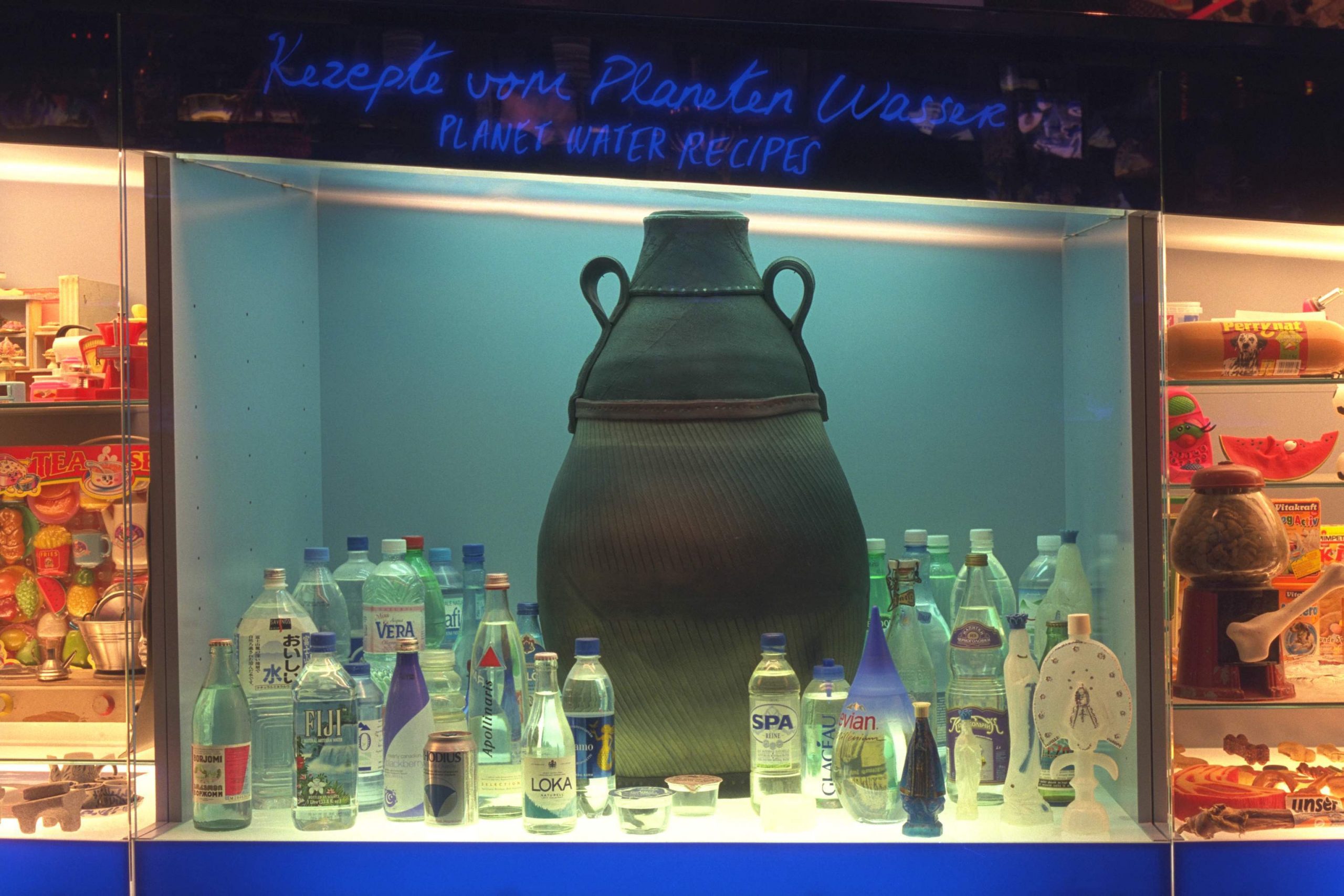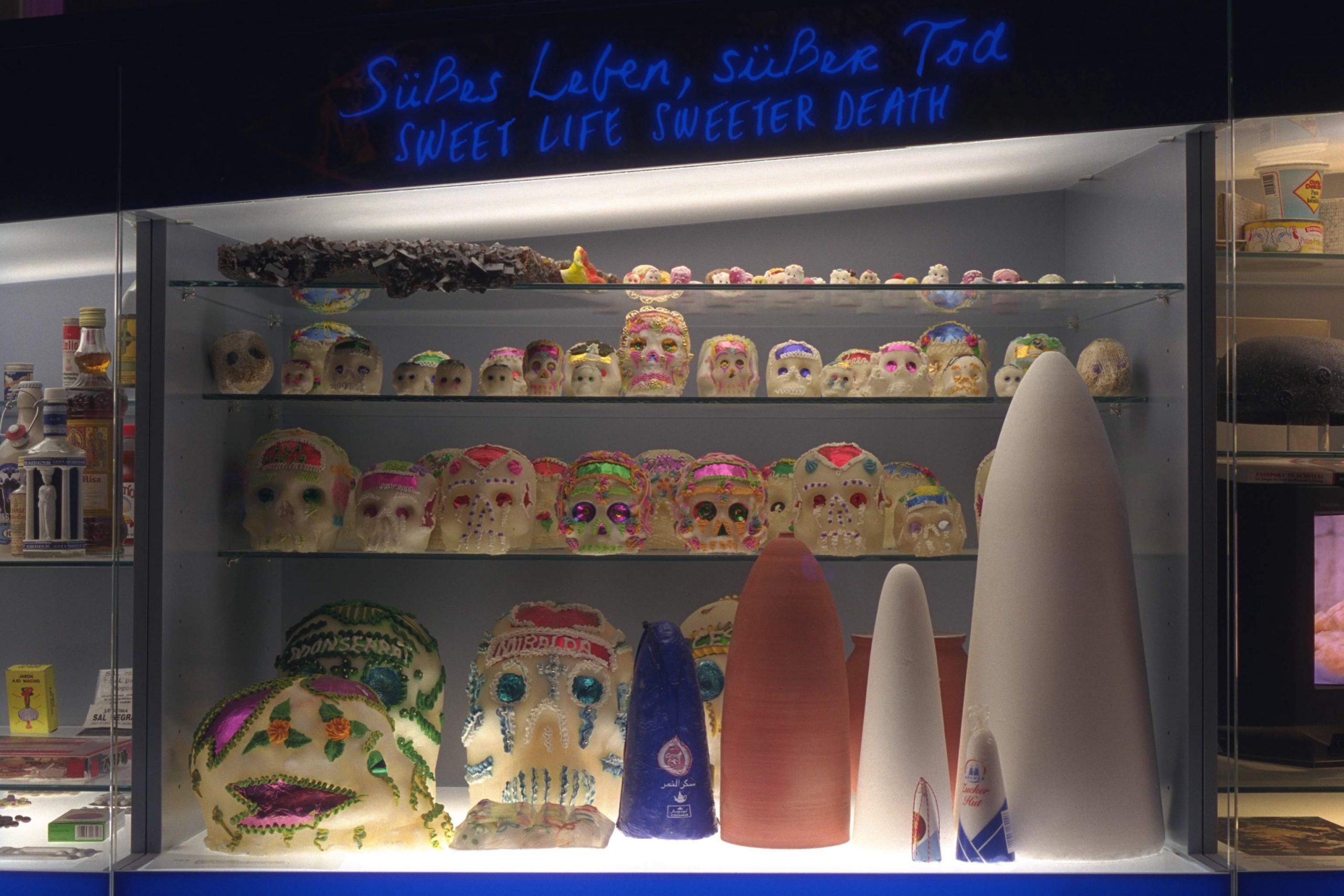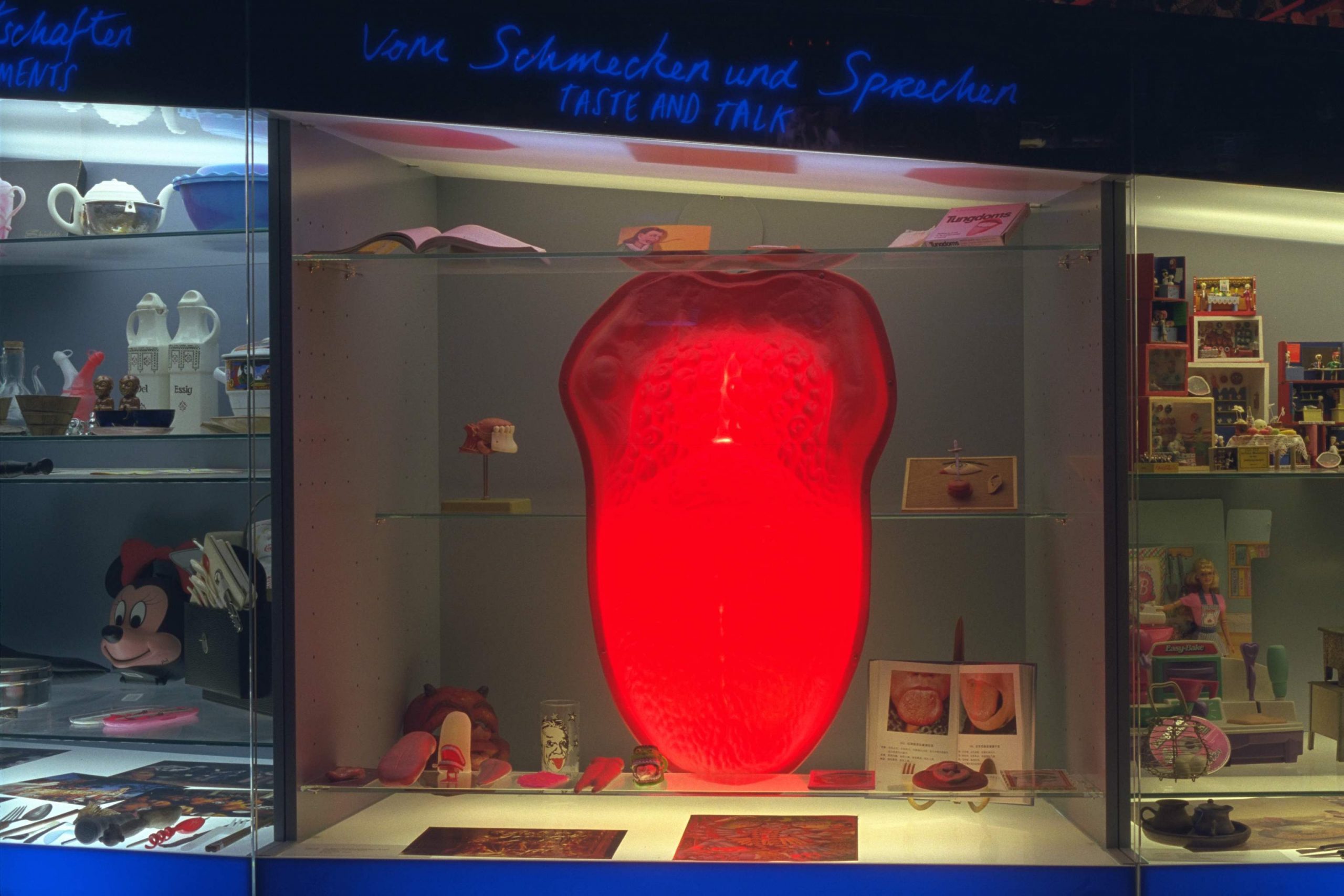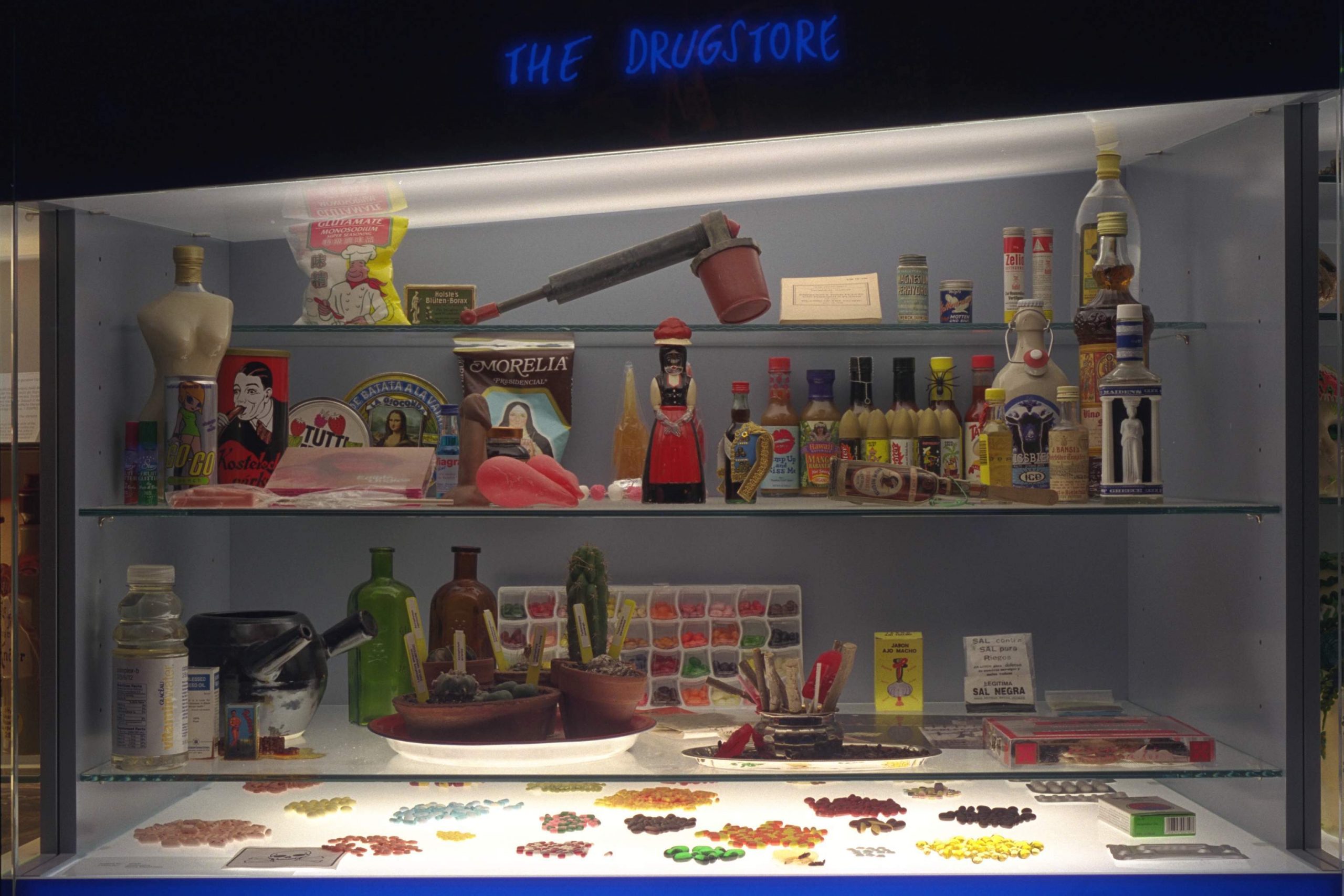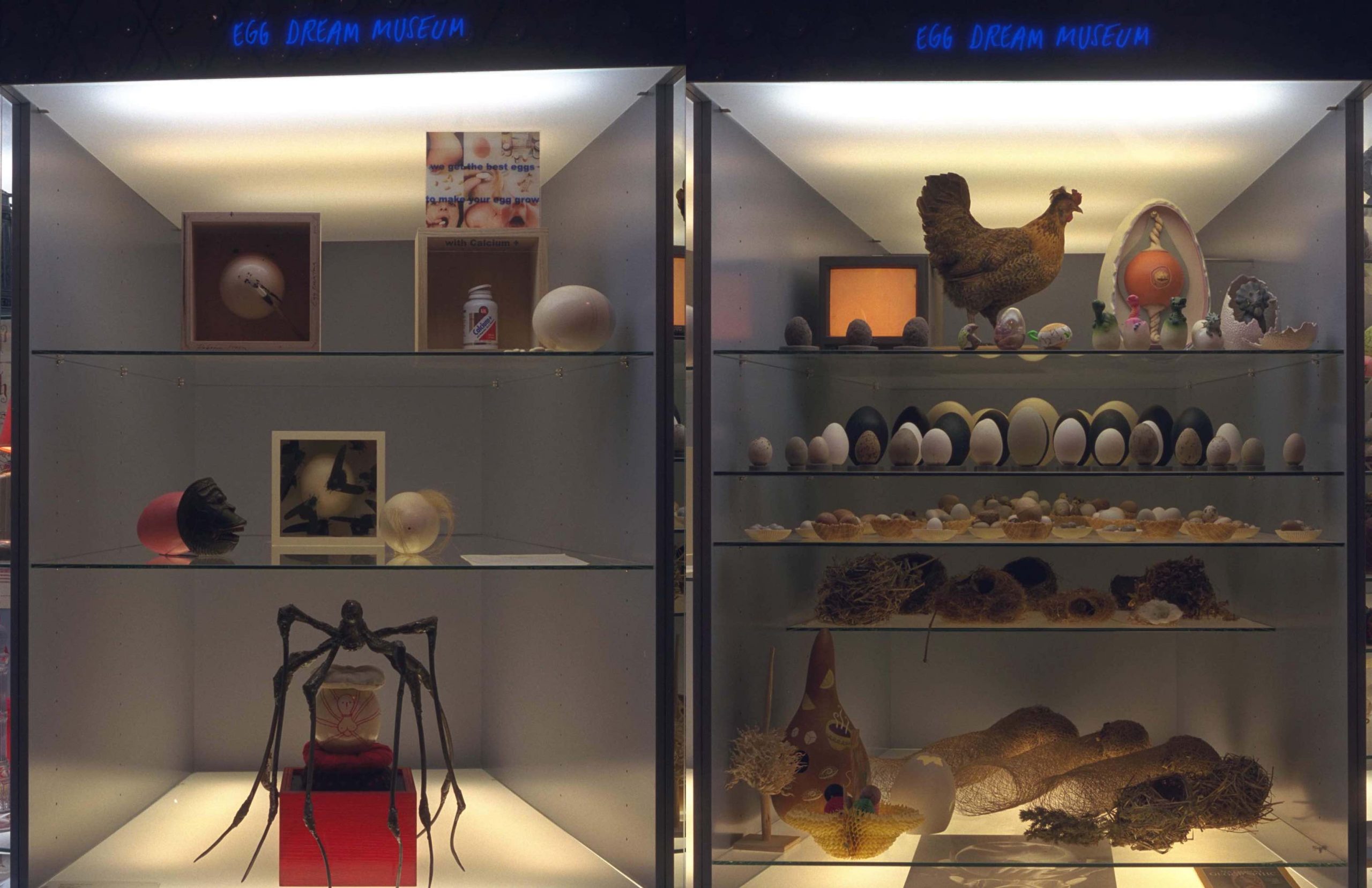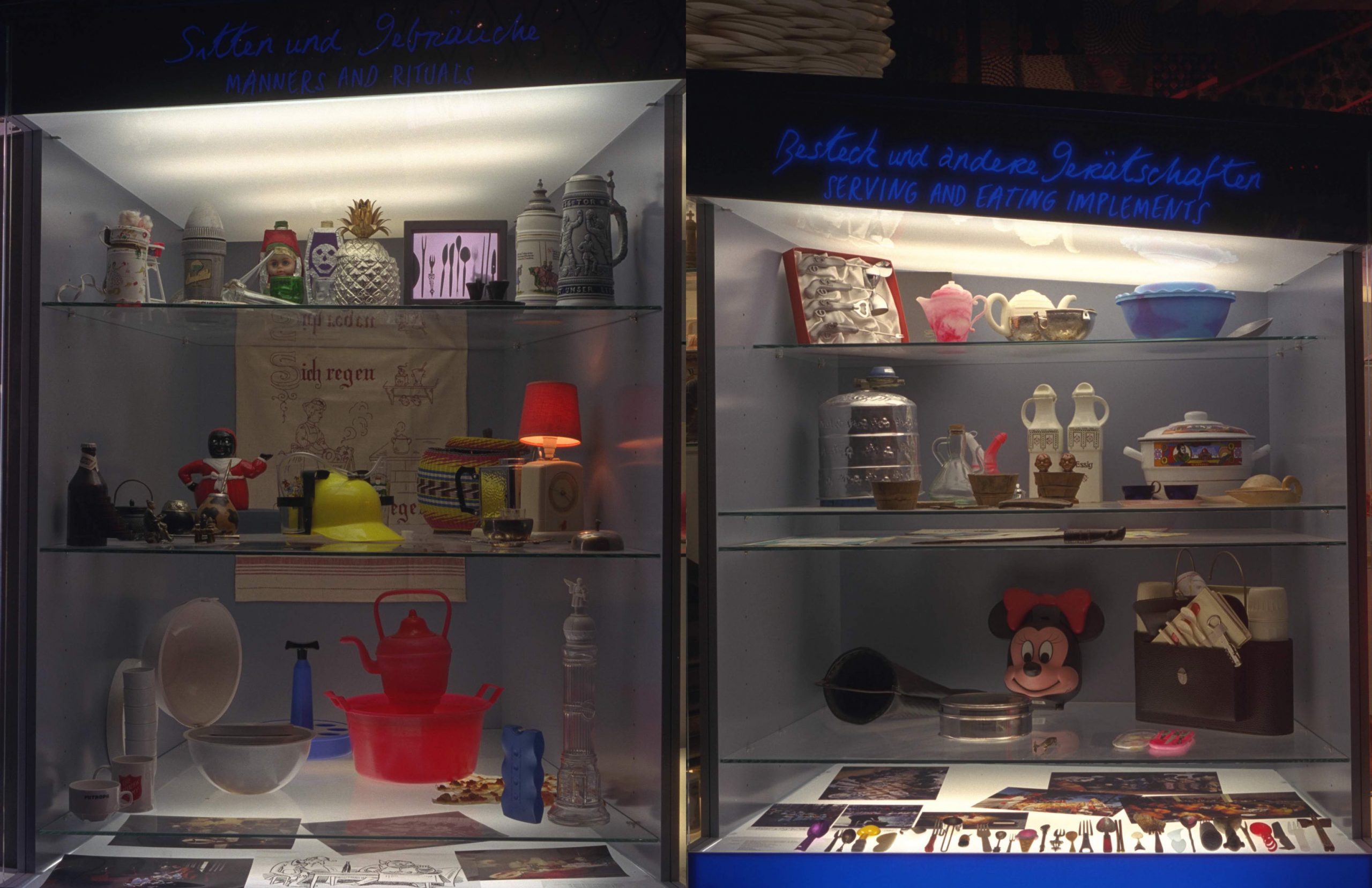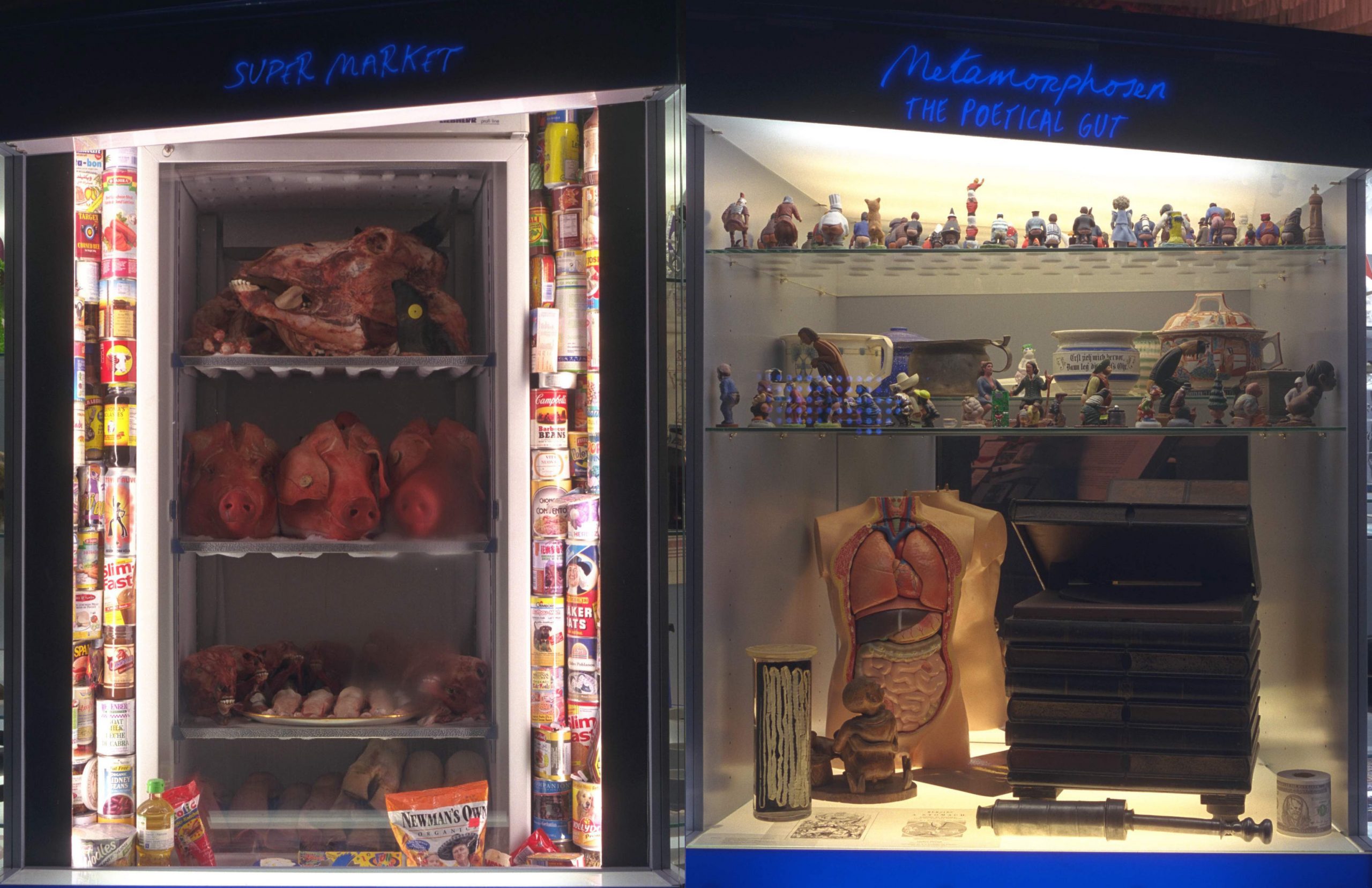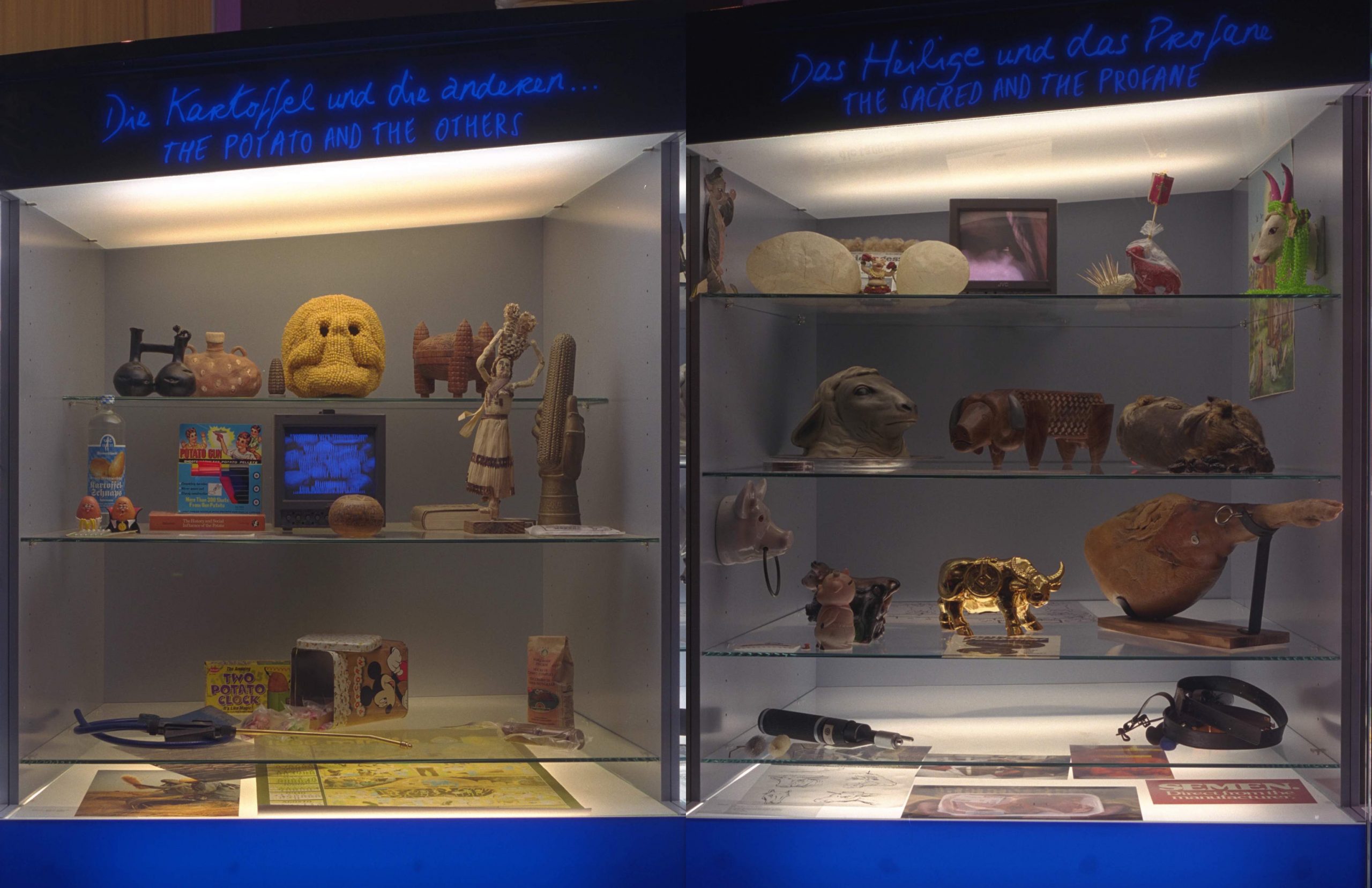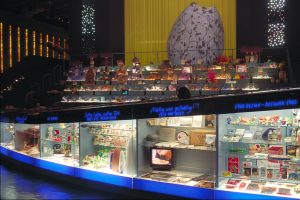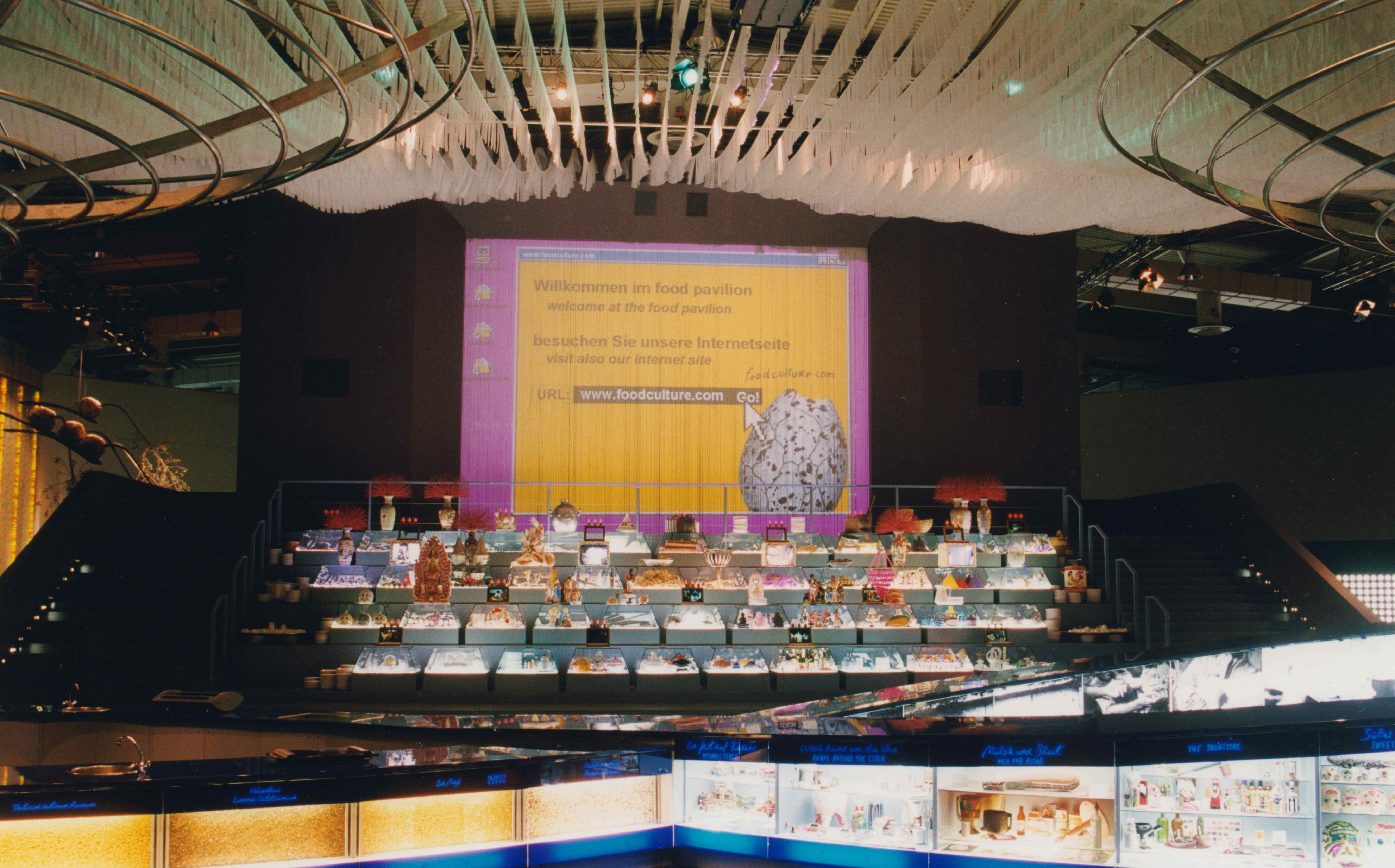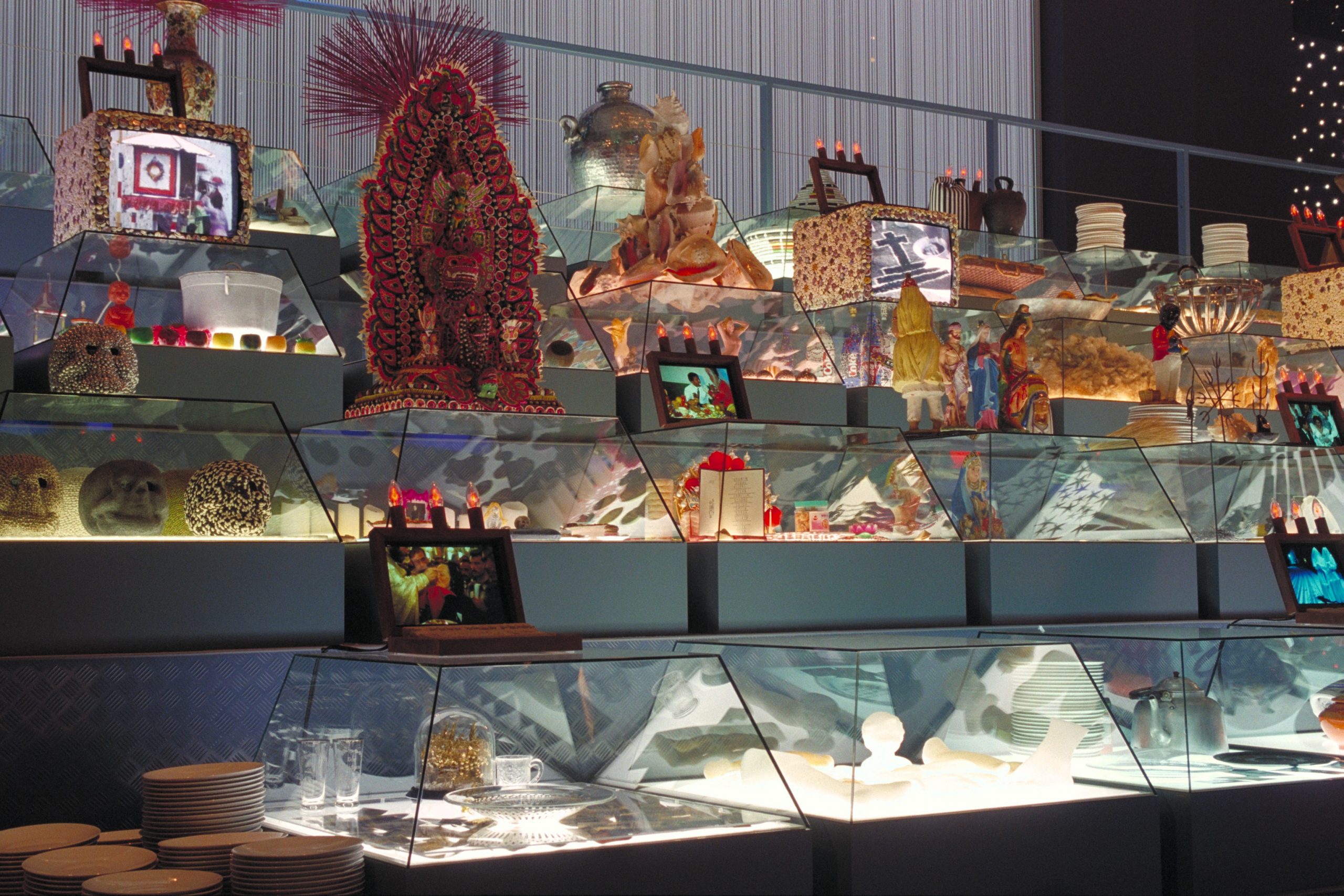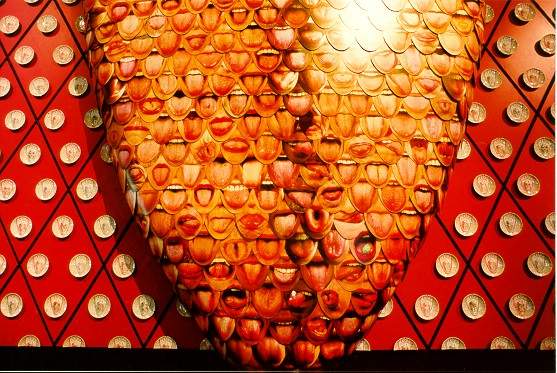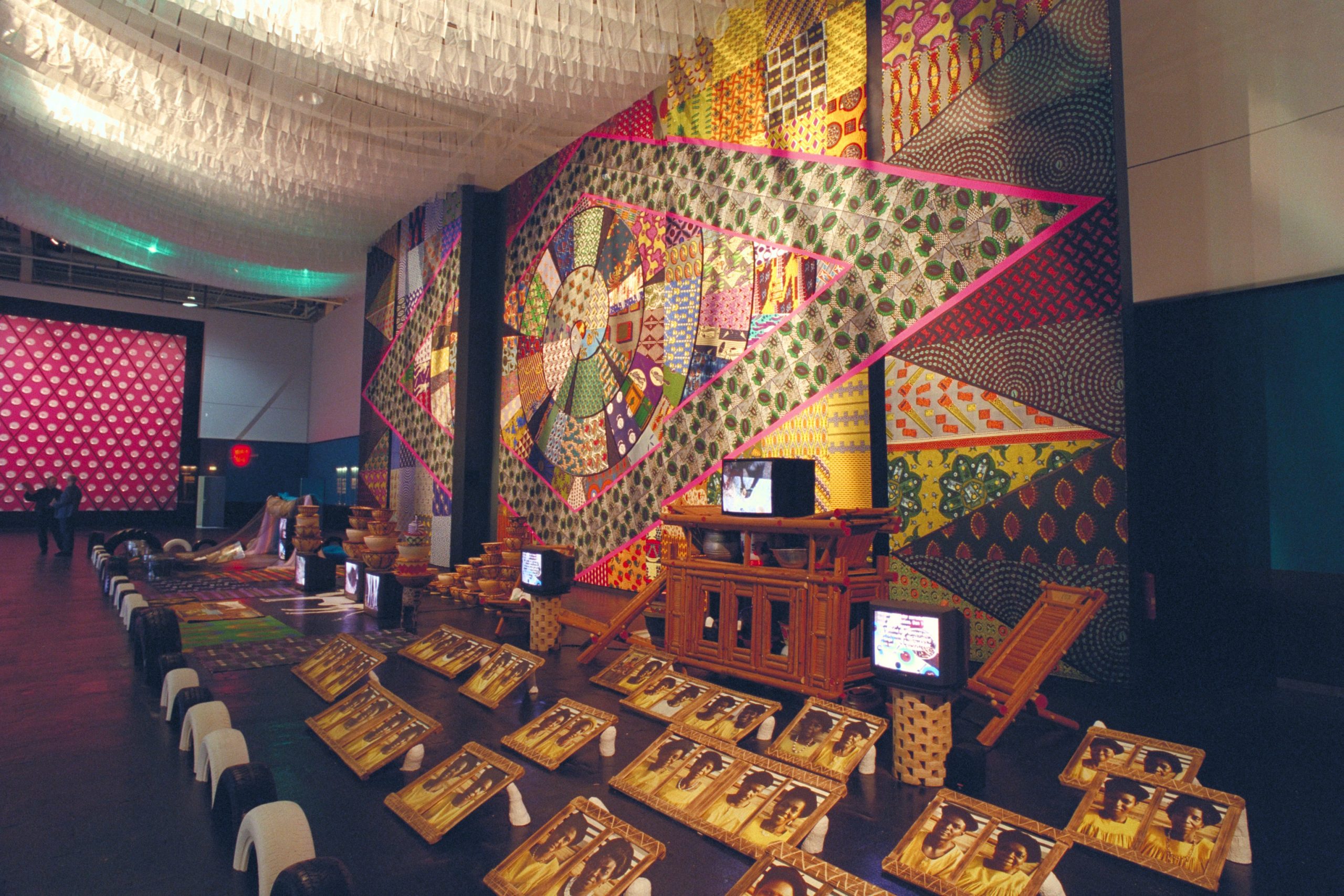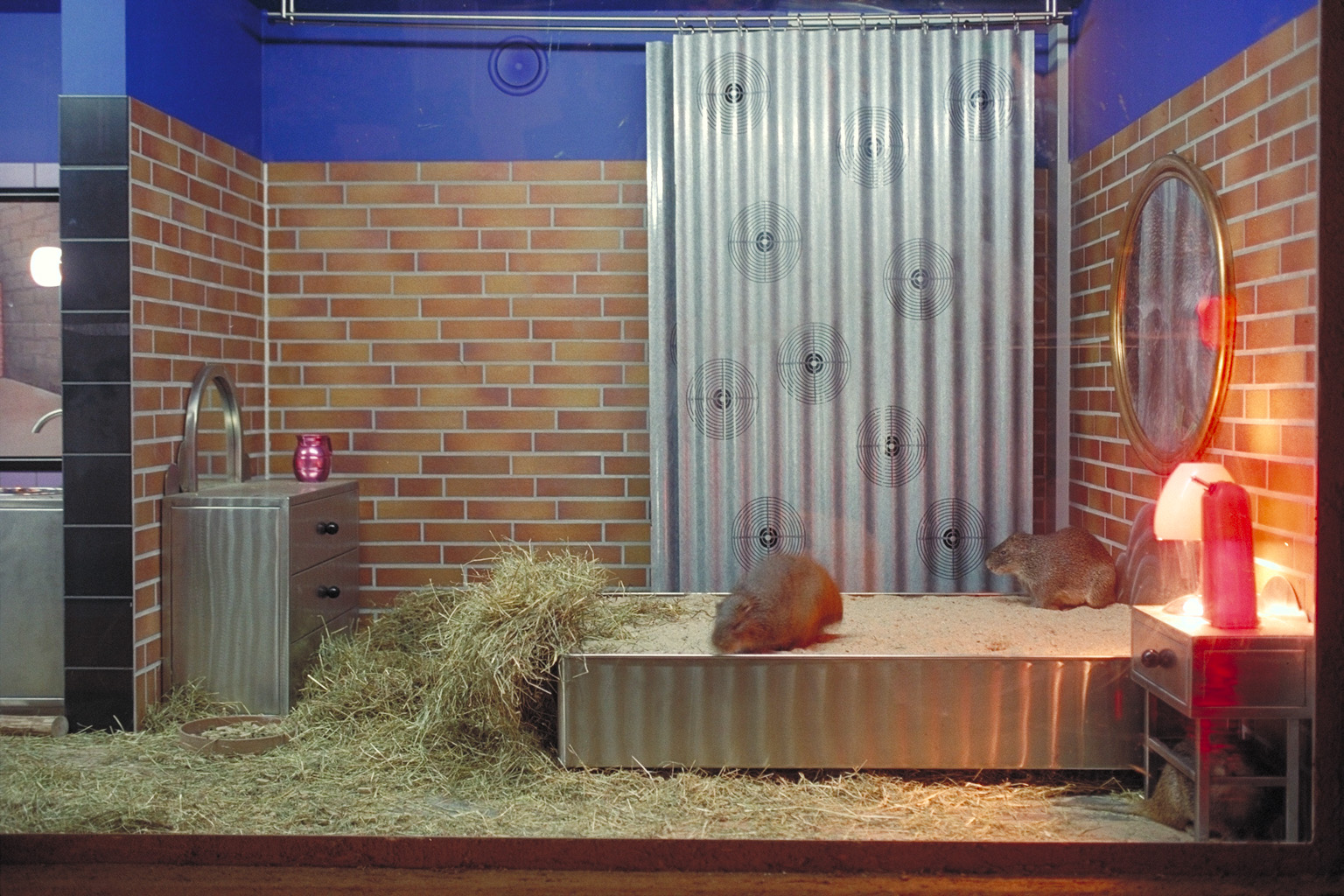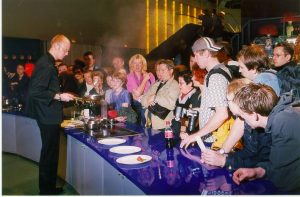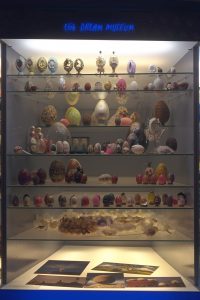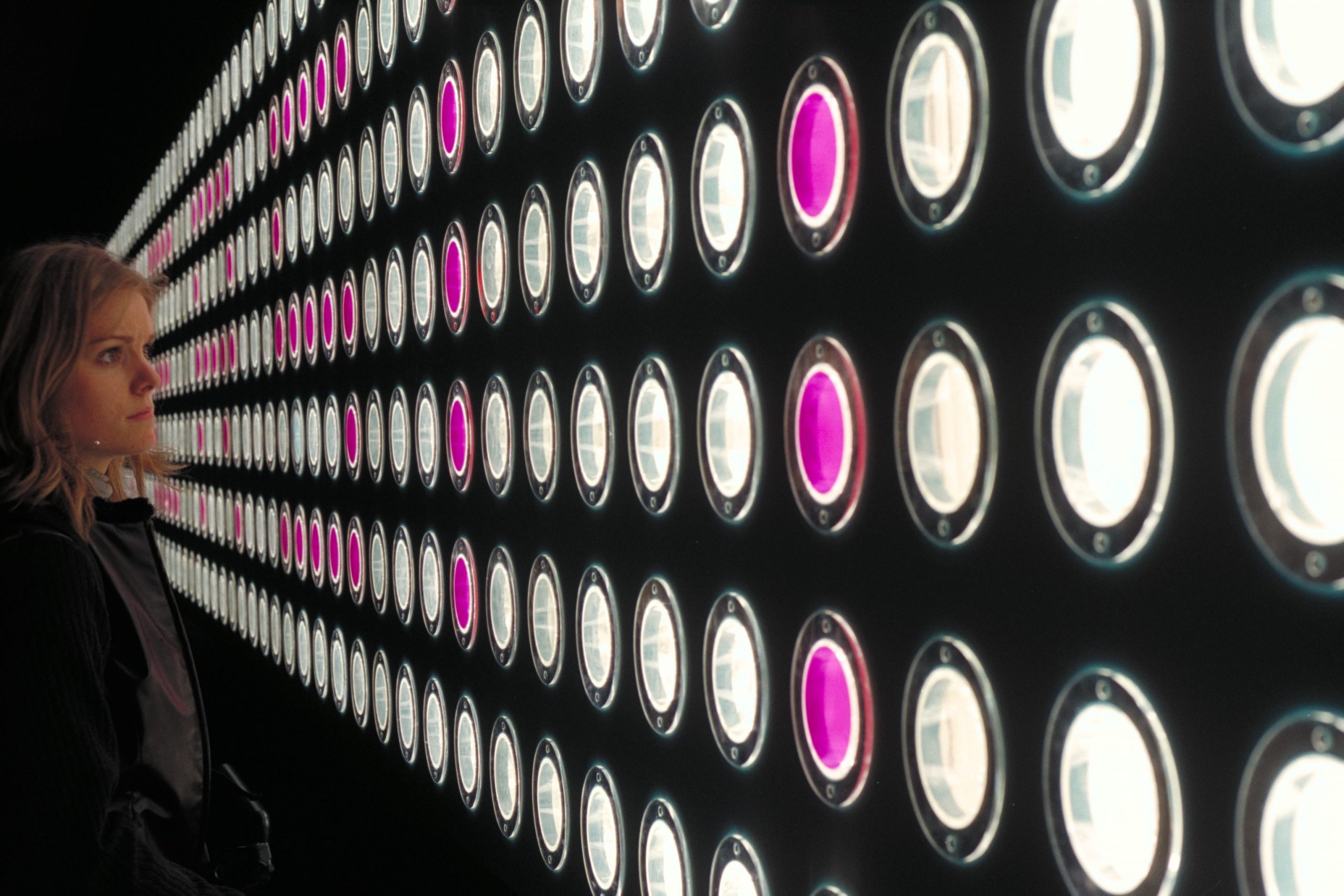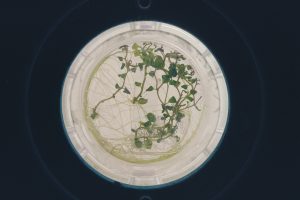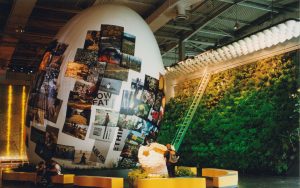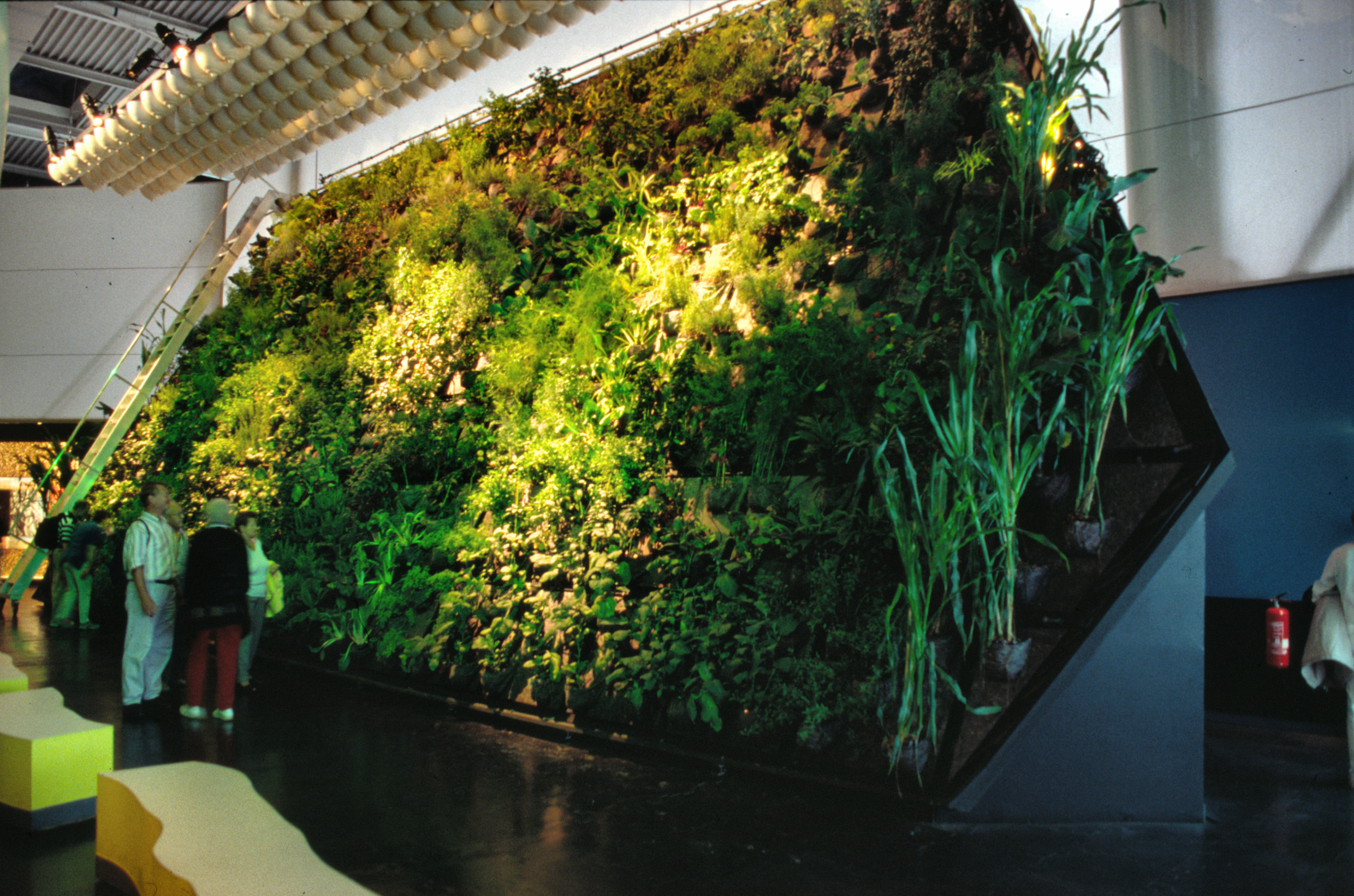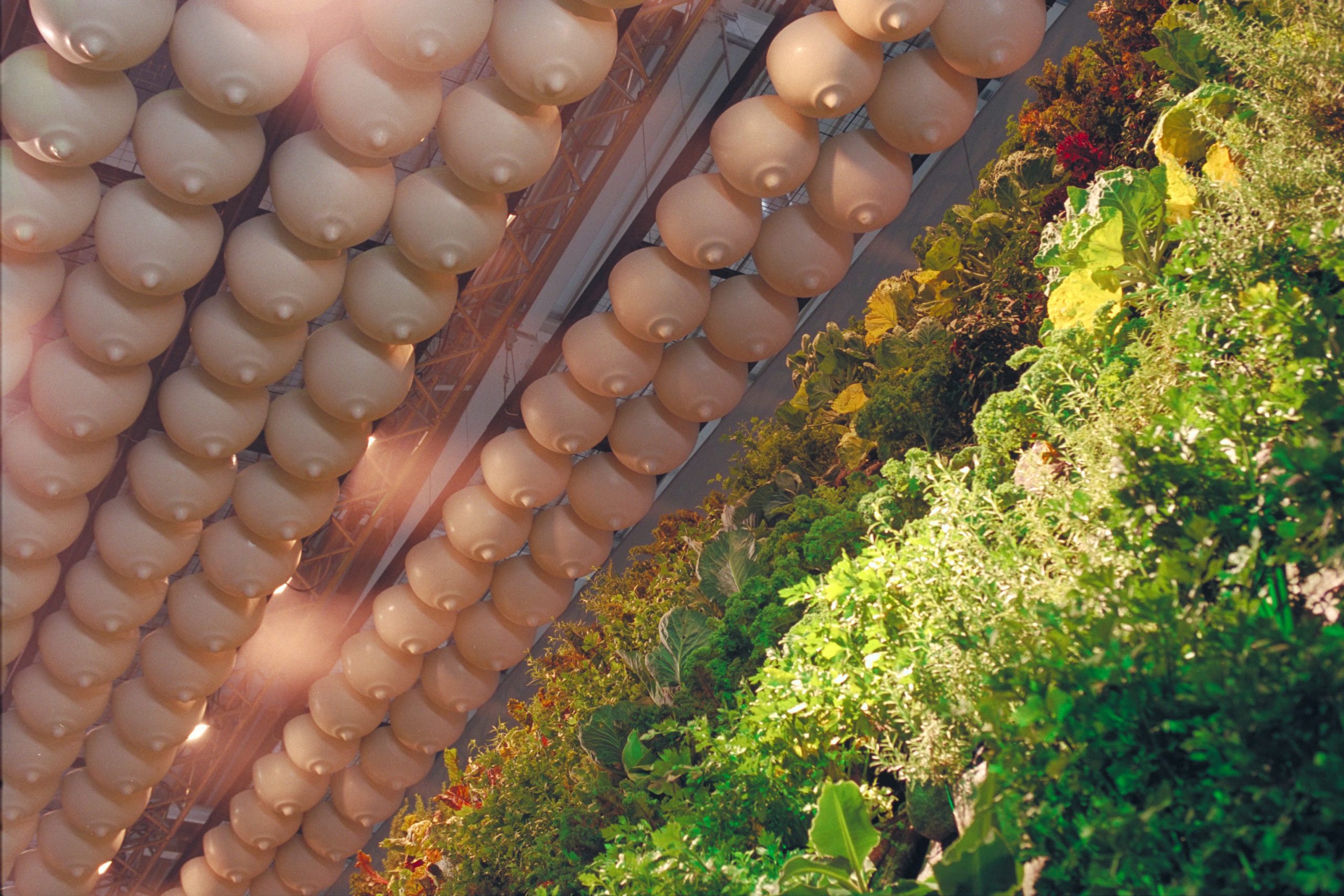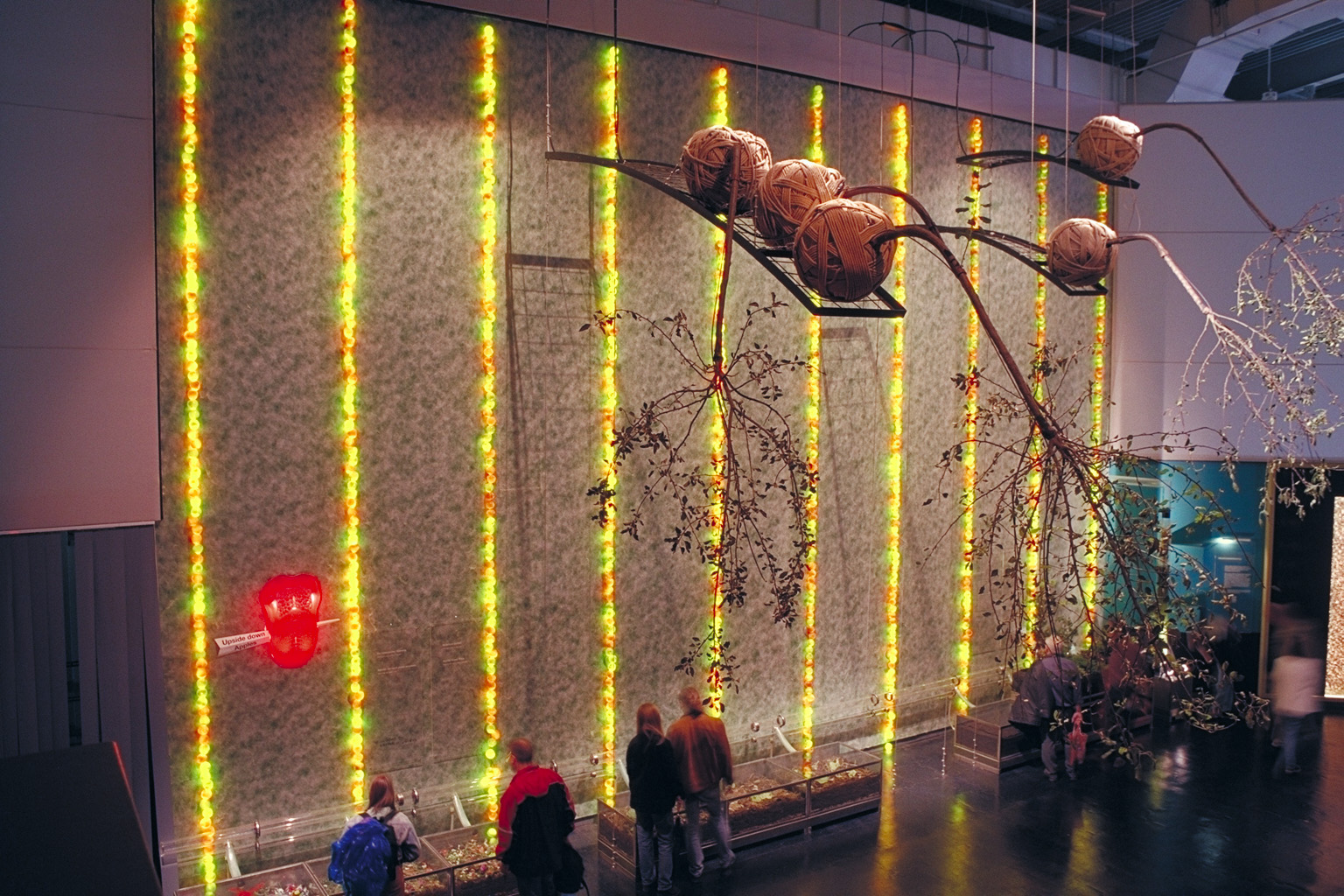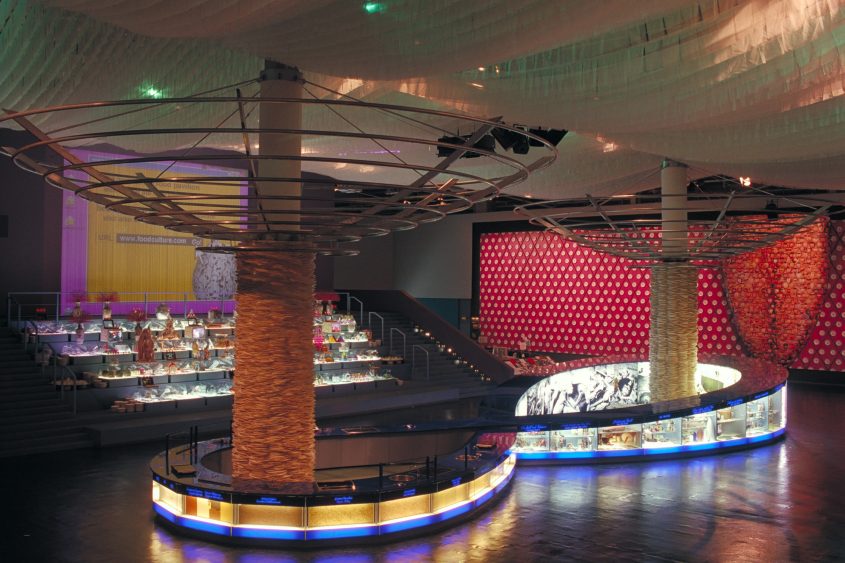
Presented in the context of Hanover World Fair in the year 2000, the Food Pavilion—which occupied an area of 1,500 square meters—focused on food as an integral part of human cultural experience. This work entailed numerous projects; it is crucial to a global understanding not only Miralda’s notion of “Food Culture”, but also his methodologies and structuring themes. The project was carried out after two years of research and the creation of a working group.
The layout of the different interventions in the pavilion constituted a sort of micro-cosmos. At the entrance, there was the most representative piece: the Infinity Table, a 41-meter long table in the shape of the mathematical sign of infinity and which acted as a meeting point for exchange and communication between visitors. The entire lower part was made up of illuminated glass cabinets that contained, on the one hand, dry foods such as beans, corn and rice; and, on the other, various objects, products and documents related to food and donated by the FoodCultura Collection. A high-tech kitchen was installed in one of the infinity sign’s loops, where more than one hundred chefs, professionals an amateurs from all over the world to be part of the Universal Exhibition. Insects and other exotic dishes were offered in tastings geared towards heightening viewers’ sense of smell and taste. Meanwhile, inside the higher of the table’s two loops, images of violence, starvation, pollution and waste were exhibited.
One of the Infinity Table‘s most remarkable items was the Egg Dream Collection, which entailed two complementary interventions. On the one hand, a collection of writings, artifacts, toys and other materials that explored the universal symbolic importance of the egg from a variety of perspectives (scientific, functional, comic, etc.). On the other, the works of a group of artists (Louise Bourgeois, Ann Hamilton, Rebecca Horn, Regina Silveira, Jana Sterbak, Eulàlia Valldosera and Irene F. Whittome), invited to create using only two iconographic and creative elements: an ostrich egg and a box.
Along an entire side wall of the pavilion was the project Cities, Tastes and Tongues, which brought to gether two different works. The first, City Plates, consisted of an installation of white ceramic plates on which countless proverbs, images, customs, maps and recipes pertinent to the food culture of twenty-four cities had been inscribed. The second, Tongue of Tongues, was a tongue-shaped collage of photographs of human tongues. Hundreds of people from around the globe participated in this collected portrait of the organ of taste, speech and pleasure.
The Laptop Altar took the shape of an enormous portable computer with two catwalks next to the keyboard. On the synthetic-thread screen (Spaghetti Screen) information and images downloaded from the Internet was projected. Inside the keys were hundreds of objects showing the connections between food, religion and spirituality.
In addition, there was an area called Garden of Edible Delights that was located in the front wall of the pavilion and explored the agricultural modalities from the cycles of growth and decomposition. It included various installations: In-Vitro Wall, The Pouches Wall, Fecundity Ceiling, Dancing Egg and Eden’s Picnic. In-Vitro Wall confronted nature and artifice by showing 560 circular display cases lit from within and incrusted in the wall. The work made reference to assisted fertilization and its impact on food and human consumption. Seen from afar, each display cases constituted a LED point that, together, formed the word DIVERSITY. The Pouches Wall was an installation on one of the front walls of the Food Pavilion. On it, a typical vertical garden of vegetables and aromatic plants grew, irrigated at intervals from the Fecundity Ceiling, made from plastic breasts. Nearby was the Dancing Egg, a hen’s egg that floated above a stream of water in reference to a traditional Catalan rite of passage from spring to summer. Finally, Eden’s Picnic was a work that questioned natural order and mechanics. Here, Natalie Joiris’s sculptural work with real apples was joined to glass benches located at the height of the floor. These benches were filled with compost and housed small, constantly growing gardens.
Throughout the exhibition space were parts of the African Projects section, which displayed milk, fish, cassava, lobster and agouti as cultural phenomena, connected to the nutritional tendencies of their respective social contexts. Starvation, malnutrition and sustainable crops were among the issues explored by the Food Pavilion, specifically in connection to the African food culture of Malawi, Burkina Faso, Mauritania and Cameroon. As a part of this section, the entire back wall of the pavilion was covered by a collage of fabrics that interspersed symbols representative of ancient agricultural practices and icons of modern technology.
Agoutis are large, long-legged rodents who live in tropical jungles. They are the main source of protein for the inhabitants of Benin, who breed them for wealth and nutrition. In the pavilion, a “dream house” that housed agoutis was built. The dwelling was designed in the style of an urban apartment, with metal furniture, bed, bath and a television set that showed videos of how these rural rats are bred, killed and cooked.
The Locust Installation was a double room that could be seen through a glass window on which there was an ancient representation of the seven Biblical plagues. The outer wall of the room had been completely covered with dry locusts, a fairly common foodstuff in some cultures. Also, a rotating wire cage shaped like a 747 and filled with live lobsters was visible through the window.
Located at the exit, the exhibition closed with Forbidden Dishes, a large participatory blackboard on which visitors could write sayings and phrases related to gender, violence, control and ethics issues.
Glass cabinets – Infinity Table
